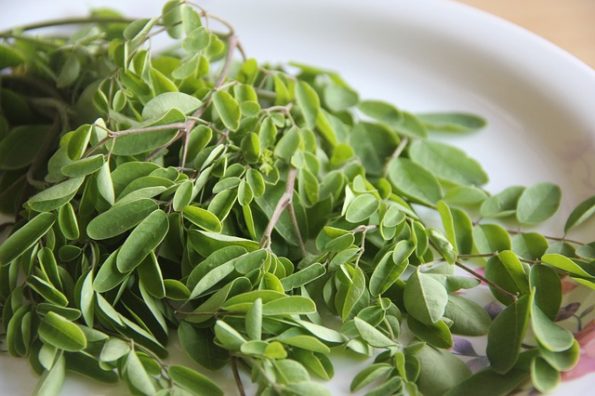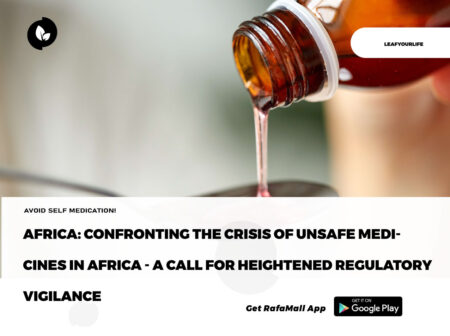
By Getachew Minas
Moringa tree is known as the “The Miracle Tree” or “The Source of Food and Energy for the twenty-first century” or in short as the “Tree of Life”. Its tree has the nutritional value, with ingredients of vitamins, minerals and medicines. It is used for water purification, animal feed, and environmental protection.
The advantages and possible negative side effects of this plant have not yet been certified and applied officially. The benefits of Moringa tree should be prescribed with fixed dosage and application by the authorized agency. There are risks of massive utilization and inflated price in the market. This may encourage indiscriminate adulteration with cheap materials. This would have an undesired effect on public health in Ethiopia. The health effects of its utilization should be available to the community that uses it. It is also important to raise awareness among the community about the benefits, availability, usage and its negative side effects.
The root bark of the tree is used for treating various ailments such as diabetes, hypertension, inflammation and infectious diseases. It is also used for treatment of cardiovascular disease, ulcers, and gastrointestinal problems. The plant is also used as an aphrodisiac to stimulate sex drive. It can increase breast milk production in the early period after childbirth. Its oil is used in traditional medicine in treating snakebites or wounds. It is also used in hair care products and also as machine lubricants. It has the potential to improve the overall health of human beings. Its leaves are excellent sources of many vitamins and minerals.
Moring leaves contain Protein, Vitamin C, Iron, Riboflavin, Vitamin A, and Magnesium. Moringa (drumstick) leaves can lower blood sugar levels. Diabetes is becoming a serious problem for Ethiopians. There are also some more benefits of its leaves. They can be cooked like spinach and are used to prepare curries. Drumstick leaves are used in the form of tea and are excellent antioxidants. Dried leaves are crushed to make powder, which is used in soups and sauces. Fresh drumstick leaves can be used directly in recipes. The drumstick leaves are also used as forage for livestock. Drumstick powder is used to make soap for hand-wash.
Here are some more medicinal benefits of drumstick leaves. It can lowers cholesterol levels, potentially reducing the risk of heart diseases. It protects skin from germs, as leaf extracts contain antioxidants which prevent cell damage and ageing caused by cell damage, stress and inflammation. It can also make the skin smooth and youthful. It is good for digestion as the leaves are excellent source of fiber that maintain healthy digestive system. It is also instrumental in the treatment of kidney and liver diseases and ulcers. It helps detoxify the body of heavy metal toxins. Moreover, after its oil extraction, the remaining seeds are used as fertilizer.
Moringa has positive effects on human health. It is free from chemical additives if used in its pure form. In its pure form, it does not have any side effects. It is reported to have no impurities. But, users have to make sure that they always take drumstick in its purest content. There is, however, no definite study on the side effects of overdose. Studies point to its nutritional, medicinal and water purification benefits. Drumstick, therefore, seems to be a unique plant with paradoxical situation of both benefits and serious side effects. Though Ethiopia has huge resource of drumstick plantation, the people could not benefit from it. There is scant research work on the nutritional, medicinal and environmental values of the plant.
Although there are a few researches or studies about the indigenous knowledge on the multi-purposes of the tree, there is no any information about the systematic applications of the nutritional, medicinal and environmental benefits of Moringa in the society. The concerned agency has not tested and certified the advantages and possible negative side effects of this plant. If there are any scientific studies, the benefits and side effects of the miracle tree should have been made public to the users through formal channels.
There is an increasing interest in the health benefits of the tree which is likely to see a boost in production in Ethiopia. As mentioned earlier, its leaves are reported to be rich in proteins and vitamins. It is processed into a powder that can be mixed with tea or other foods. It is reported that in Europe, 200 grams of Moringa sells for about US $10 but in Ethiopia its price is around US $2.50. This reflects how the plant is less appreciated in the domestic than in the external market. It indicates that a lot of promotion has to be conducted within the country.
In Ethiopia, Moringa is the most commonly grown species, known locally as Shiferaw or Aleko. In Southern Ethiopia, the leaf of the plant is used as a substitute for cabbage in the local diet. It is also used as animal feed. As consumption is restricted to the southern part of the country, it is the least commercialized plant in the country. But, this is believed to change soon as people come to learn about its food and medicinal values. Interest in this tree is growing, both in Ethiopia and abroad. Production is on the rise in other parts of the country. It is reported that its powder is increasingly available in city supermarkets in Ethiopia and there are plans to increase export with several investors interested in establishing value chains for the product, supported by the government. Research is also being conducted on the tree and its nutritional value.
Malnutrition causes a great deal of human suffering. It is associated with more than half of all deaths of children worldwide. Thus nutrition plays an important role in the reduction of poverty from one generation to the next. The potential benefit of using the tree resolves the malnutrition problem facing children. The UN former Secretary-General Kofi Annan said that Africa is the only continent where child malnutrition is getting worse rather than better. Annan calls for a green revolution, halving hunger in Africa by 2015 under global anti-poverty goal.
Moringa oleifera, is a multi-purpose food plant, which is used in many African countries, including Ethiopia. Almost all parts of the tree are used for food, oil, fiber, and/or medicine. However, it has been cultivated in many parts of the world for millennia and can now be found in almost all tropical countries. It is a commercial crop which is cultivated extensively in India and parts of Africa. It would be challenging to find a region in the tropics or subtropics where the tree is not grown as a backyard tree for leaf and pod consumption and for fiber. It is most commonly found in Asia, with leaves that have a distinctively strong, mustard-like taste. The demand for it is not fully known in Ethiopian. However, the people have now started benefitting from the rising importance of the tree.
The demand for it is projected to be huge and it will create job opportunity not only in the rural area but also in urban horticulture. Despite the growing population in Ethiopia, the commercialization of Moringa products in the country is still very informal. It is also difficult to get reliable information on production and market prices. To effectively exploit the existing market potential, its commercialization should become more structured and formalized. Thus, the coordination between producers, wholesalers and retailers should be improved. Lessons from the experiences of other countries in horticulture may help in programing and implementing the production and marketing of the plant.
Consumers’ tastes have brought about by improved economic conditions that have an impact on consumption habits. Exotic and imported foods as well as health foods and organic foods are now in high demand by consumers, both domestically and externally. Studies show that the horticultural exports of Sub-Saharan Africa now exceed USD 2 billion, yet this is only 4 per cent of the world’s total. Thus, the specific tree is a horticulture product with a greater value and high returns for economic development in Ethiopia, which has an ample scope to expand its production. It is relatively inexpensive as a source of nutrition packed food and supplement for humans and animals and is rich in health promoting chemical, various vitamins and minerals. It is useful for several purposes for example, vegetable, medicine, ornament, plant oil, firewood, fencing, rope, fodder, and in the construction of huts.
Read the original article on Ethiopian Herald.











